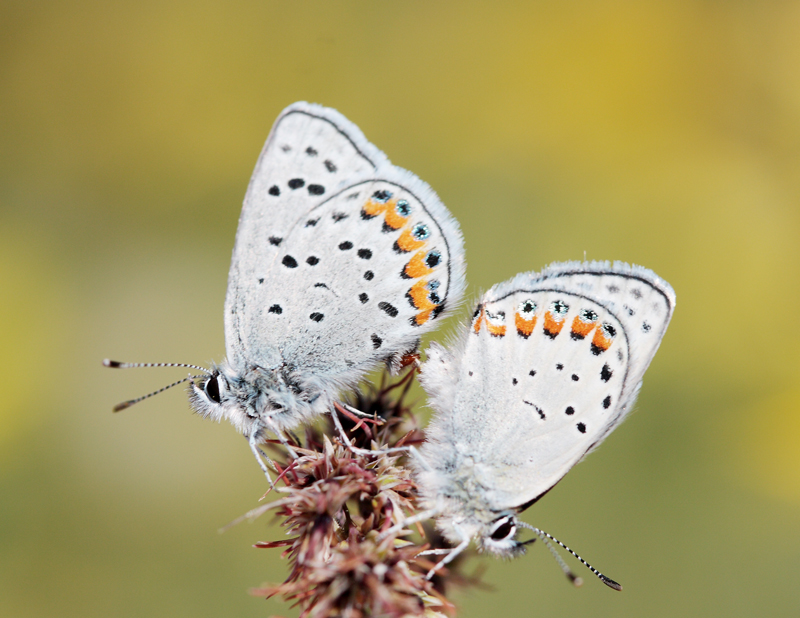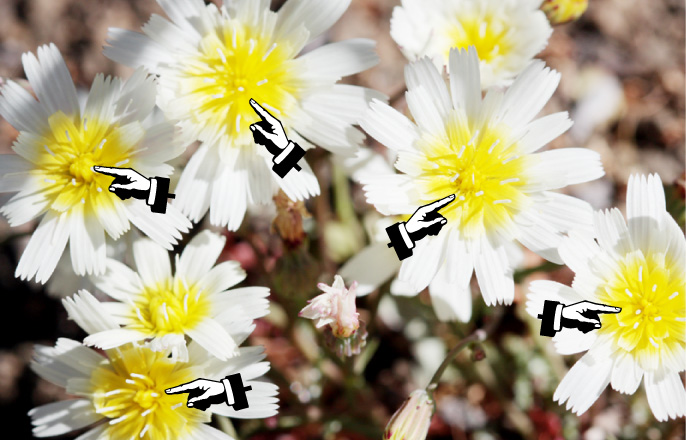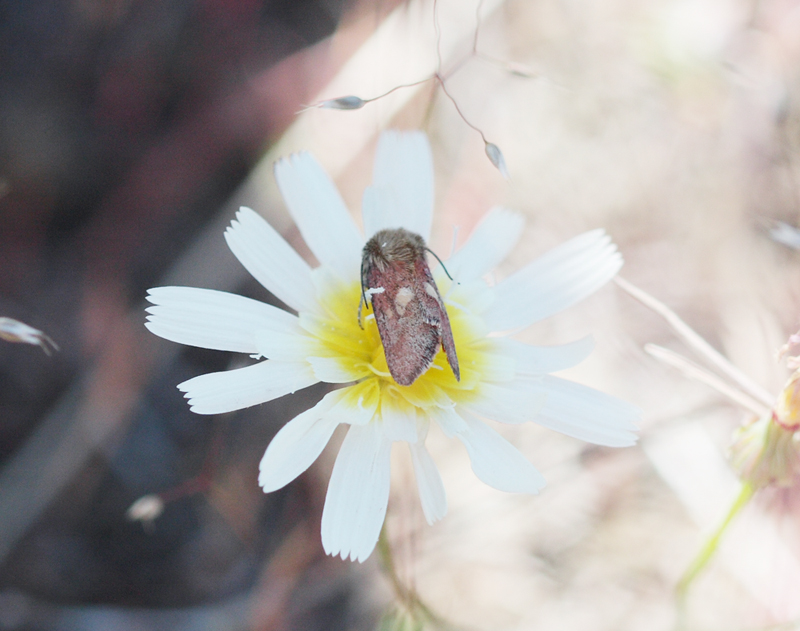Voor de laatste vier weekenden nu heb ik op een gans achtervolging geweest, voor een mot, Speedy Heliolonche. Het is een prachtige kleine uilen met roze voorvleugels en prachtige oranjerode achtervleugels. Het is niet erg vaak tegengekomen en alleen te vinden langs het noorden van Californië bergketens voeden op malacothrix floccifera – een CA endemische bloem. Elke reis ik heb gekregen skunked, tot vandaag – Ik verzamelde twee! Zoals u zich wellicht herinnert mijn eerste uitje was ongeveer een maand geleden, geen mot, maar een mooie reeks van monsters en foto's van Adela motten. De laatste paar trips hebben niet eens in de buurt aan het zijn zo productief als de Adela één. Dus wat te doen als het niet vinden van uw doelgroep? Hier krijg je een zonnebrand en neem wat mollig foto's.
 Op heterdaad betrapt. Plebejer ACMO
Op heterdaad betrapt. Plebejer ACMO
(onder voortgezet)
Niet echt een mot.
EEN MOTOR!
Dit H. celeris vertoont typisch bloemenmotgedrag, zittend op de bloemhoofdvlakte als de dag. Ze blijven eigenlijk de hele nacht zo op de bloem (zelfs als het zich om hen heen sluit zoals sommige bloemen doen – wat ertoe leidt dat ze in de volksmond bekend staan als “taco motten”… omdat de kont van de mot boven de bloembladen uitsteekt en eruitziet alsof hij in een taco zit). En dit is precies waarom ik mijn appartement verliet om 6 ben vanmorgen om langs te komen 8. Als het buiten nog steeds koud is, trillen ze niet eens als je dichterbij komt. En, als ze niet vliegen, het is gemakkelijk om een gebied te onderzoeken op motten en weet dat je er geen hebt gemist. Maar, zodra de zon ze opwarmt, ze worden snelle klootzakken en verdwijnen voordat je zelfs maar naar de lensdop kunt grijpen. Omdat dit de eerste mot was die ik vandaag zag, heb ik echt niet de moeite genomen om een geweldige foto te maken. Onderwerpen hebben de nare gewoonte om meteen weg te vliegen nadat je de goede foto hebt gemaakt (goed, meestal vlak voor het goede schot)… en ik kon het risico niet lopen het enige exemplaar van de dag te verliezen.




Where’s the “like” button? Great pics and good commentary.
“geen mot, geen mot, no moth…”
Ha. I lol’d.
It is a pretty little thing…
A colorful, day-flying moth that sits prominently in the center of flowers – chemical defenses?
Dat is een goede vraag, and it has crossed my mind before. There a lot of these small day flying flower moths that are clearly not cryptic yet I haven’t ever read about any chemical defenses or mimicry. I also don’t think of Malacothrix as a particularly noxious plant… will investigate.
Oke, now I have to post the latest mystery moth pics I took a few days ago. (4/30) Pretty please if you have a moment, check it out and render your sage opinion. !
Ted’s question has nagged me this week. I’ve never heard of anyone studying this, maar… Has anyone seen these flower moths under UV? See a related flower species under UV here: http://www.naturfotograf.com/UV_SENE_AQU.html. Misschien, while sitting on the bulls-eye, these moths become “invisible” to predators who see UV, such a birds. The added bonus for the moths is this might increase their chances of finding a mate which is attracted to the UV bulls-eye.
You have to be right about that Katie, I’ve been thinking about this too. I can’t recall any literature in reference to adult insect UV crypsis. There is some work in regards to caterpillars… but I’ll have to do some more digging. Birds are probably not the primary predator on these moths since their acute vision makes them incredibly difficult to approach in the daytime. Maar, most lizards see in UV and these flowers are just about at head level for most small reptiles (and there were a ton on site).
Soms, the light bulb just turns on.
So there is a monograph to this subfamily – and in there Hardwick (author) points out the counterintuitive crypsis of this moth! Instead of a good idea he postulates
Dus, he just assumes they are oddities because the flowers changed without them and they survived “possibly because of a decrease in predation pressure”.
Seems to me that UV crypsis is much more likely. En… I don’t believe that’s been shown in adult Lepidoptera. Add it to the list!
; ) Just make sure you credit me for this idea when you become the ruler of the universe, er… recognized expert on lepidopteran UV crypsis. I’m glad you looked it up. Please let me know if you find out any more info.